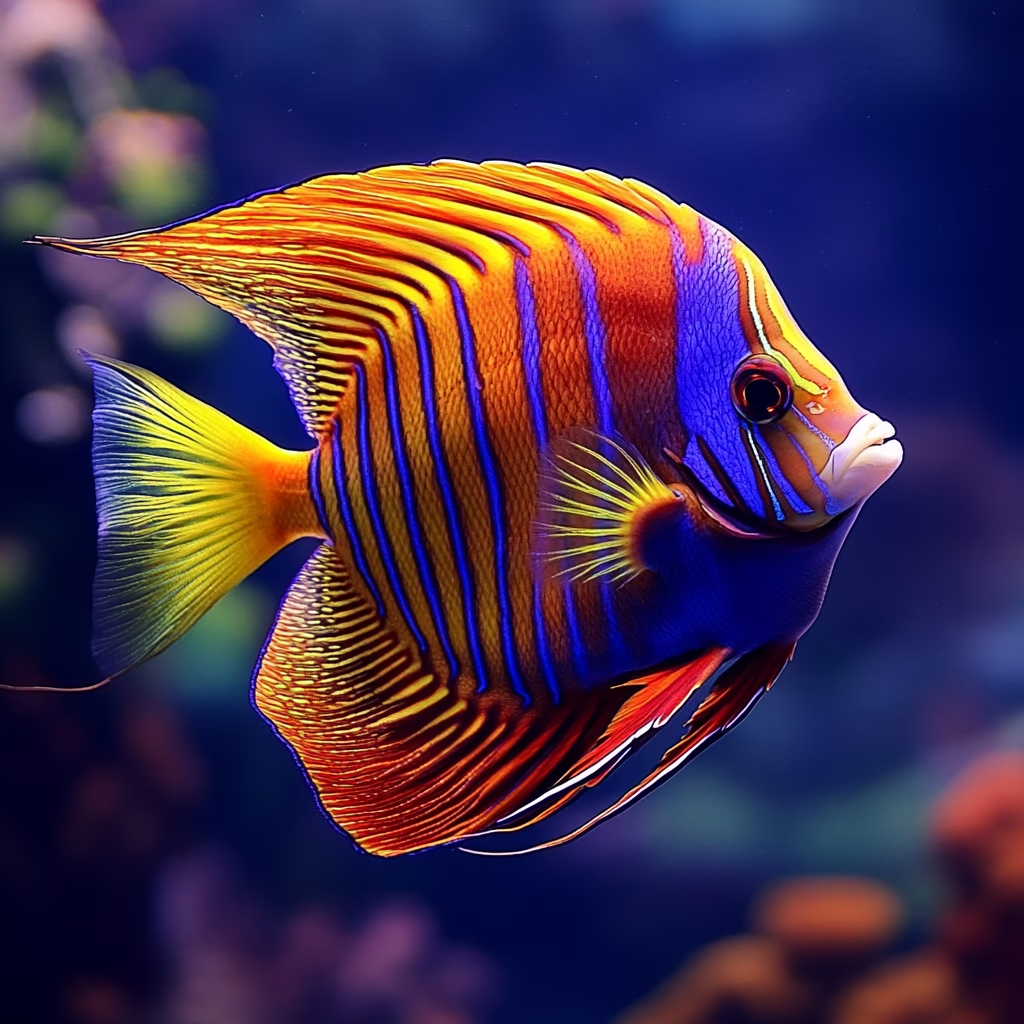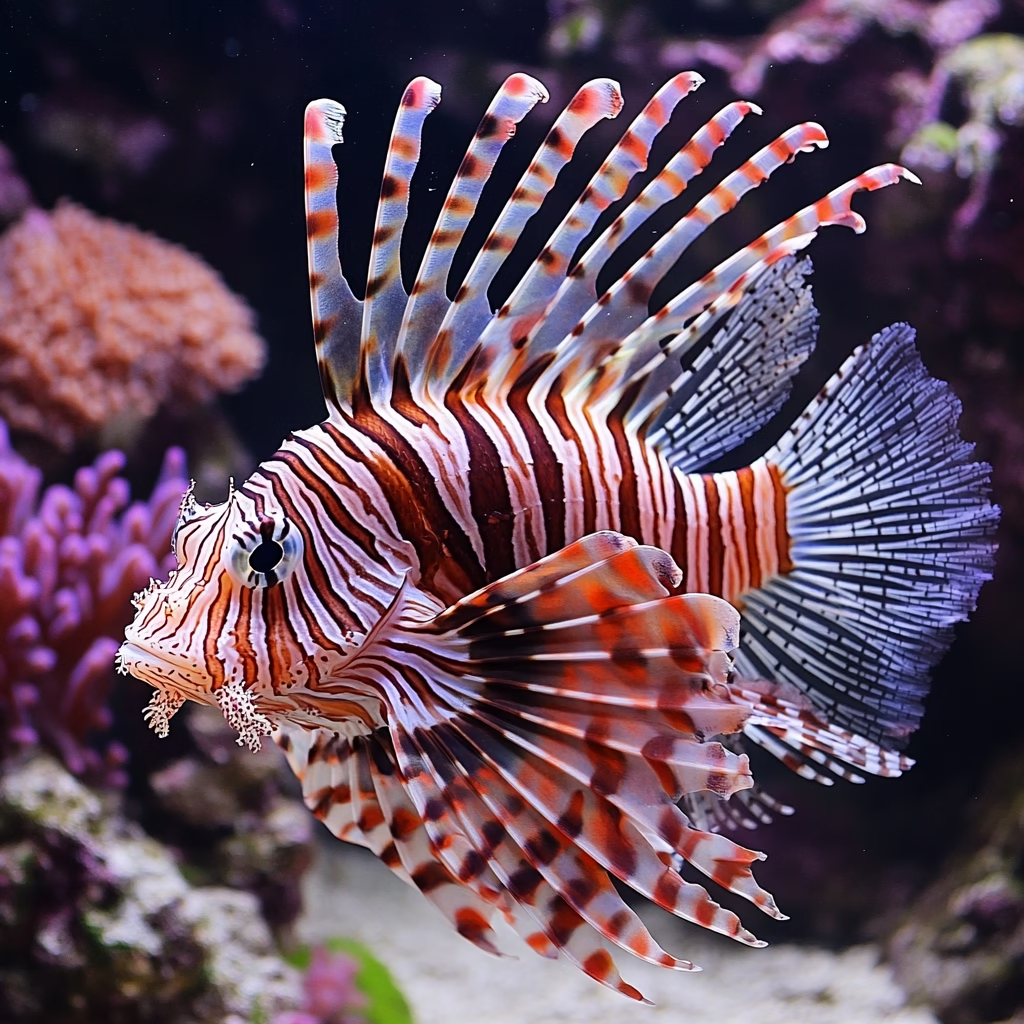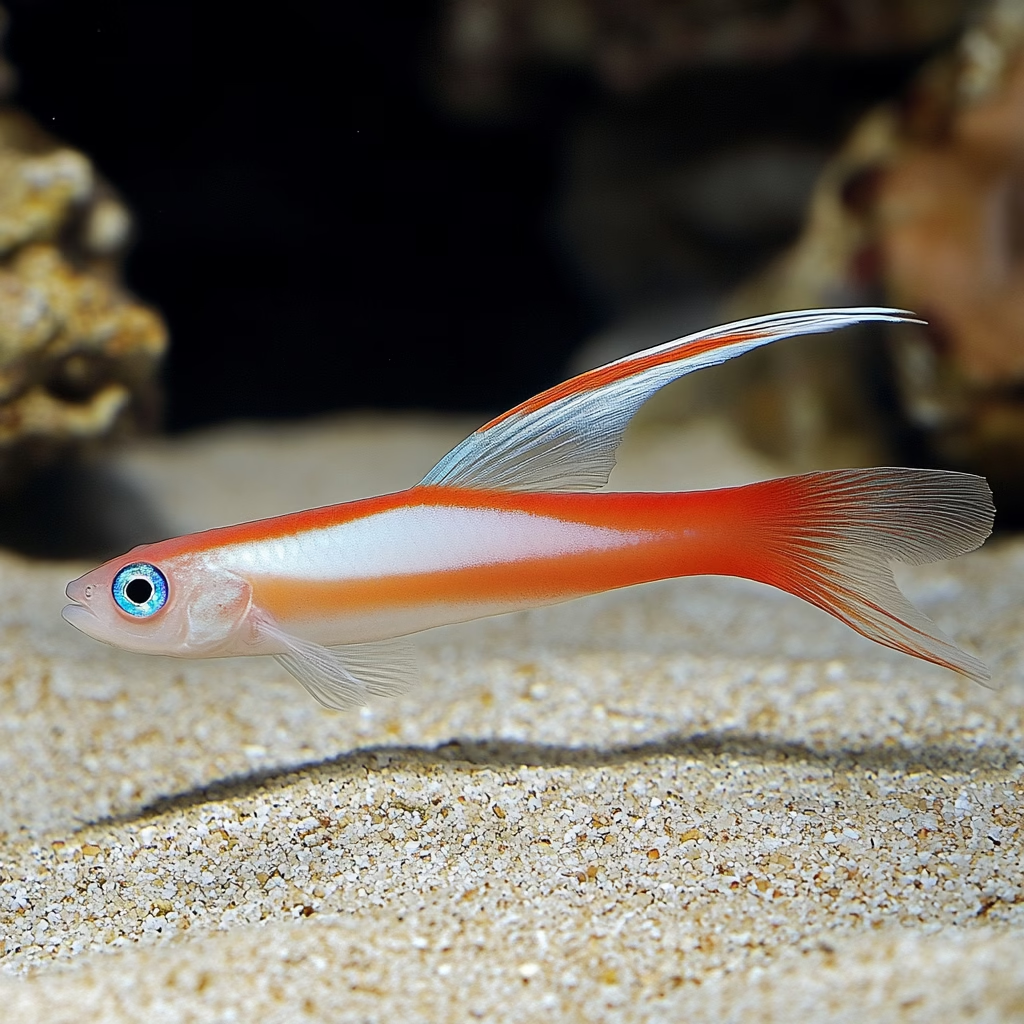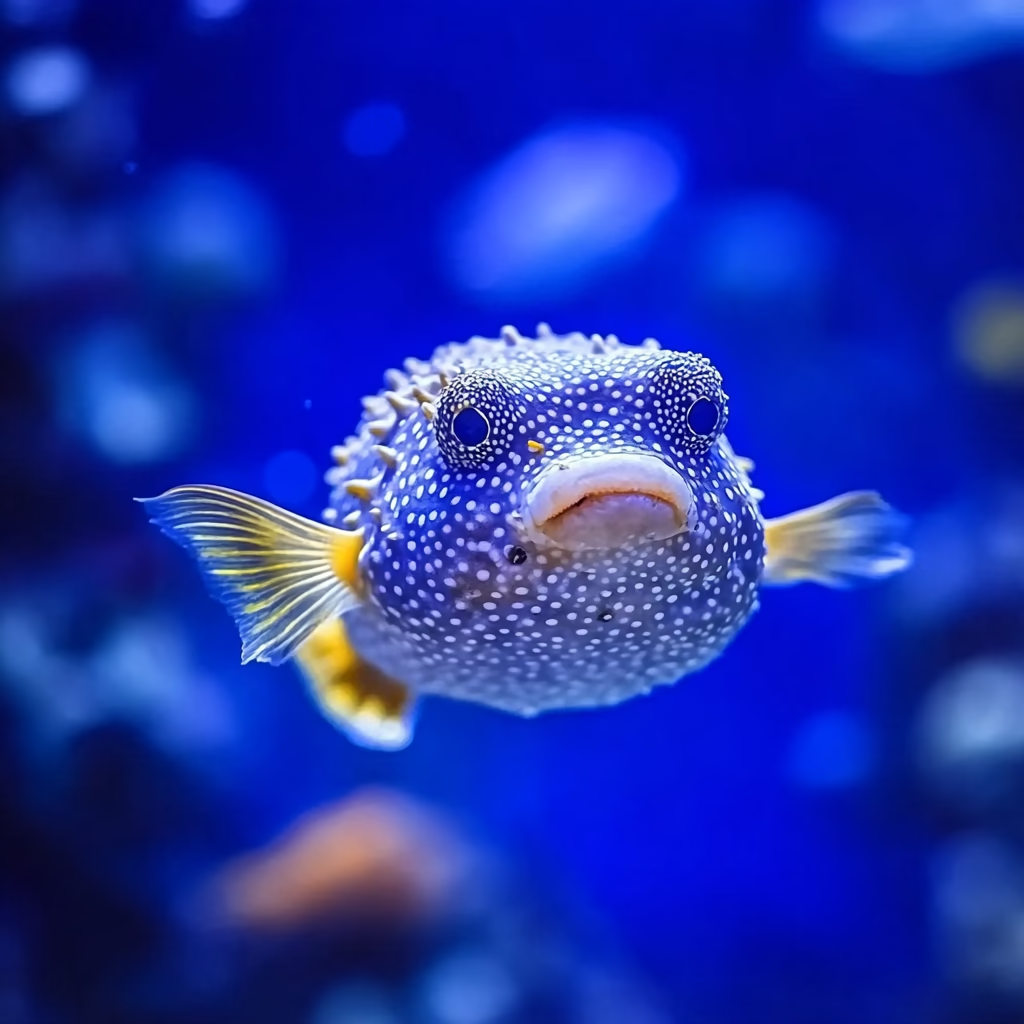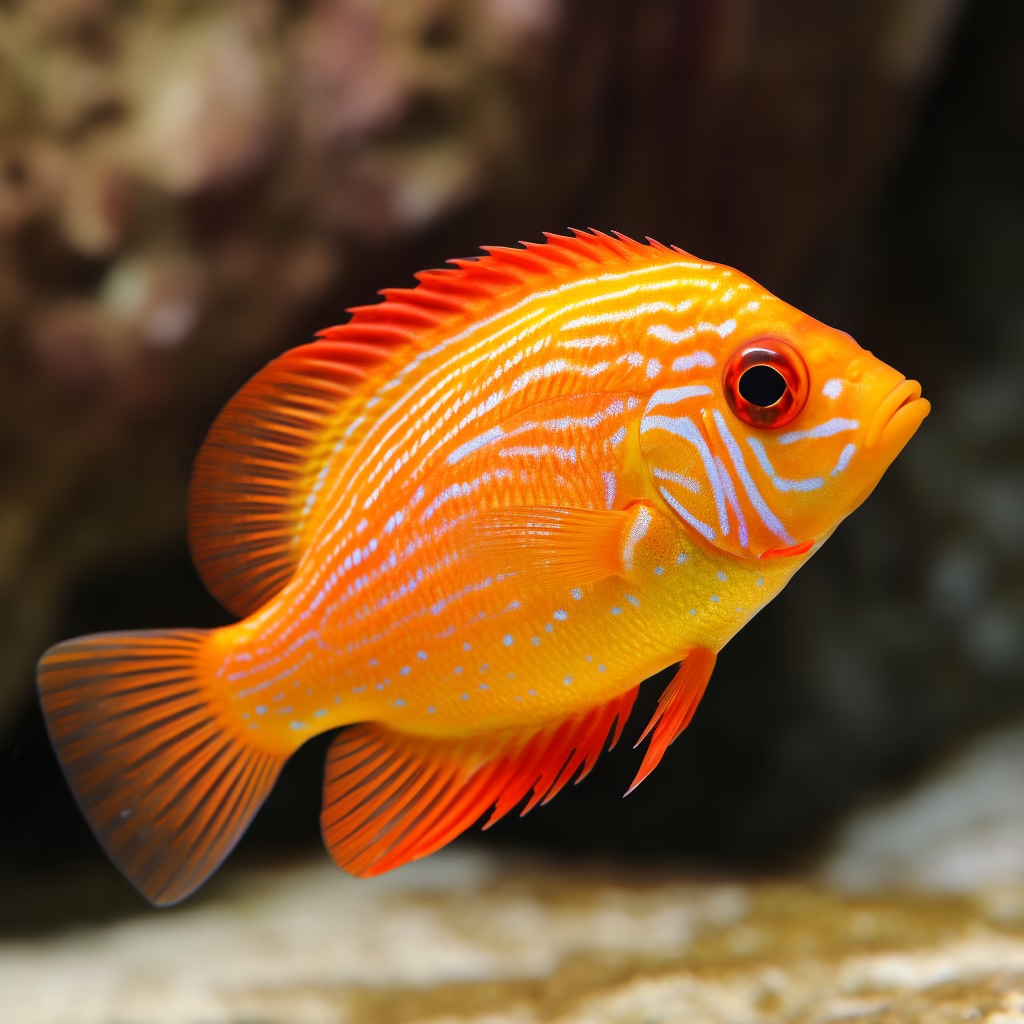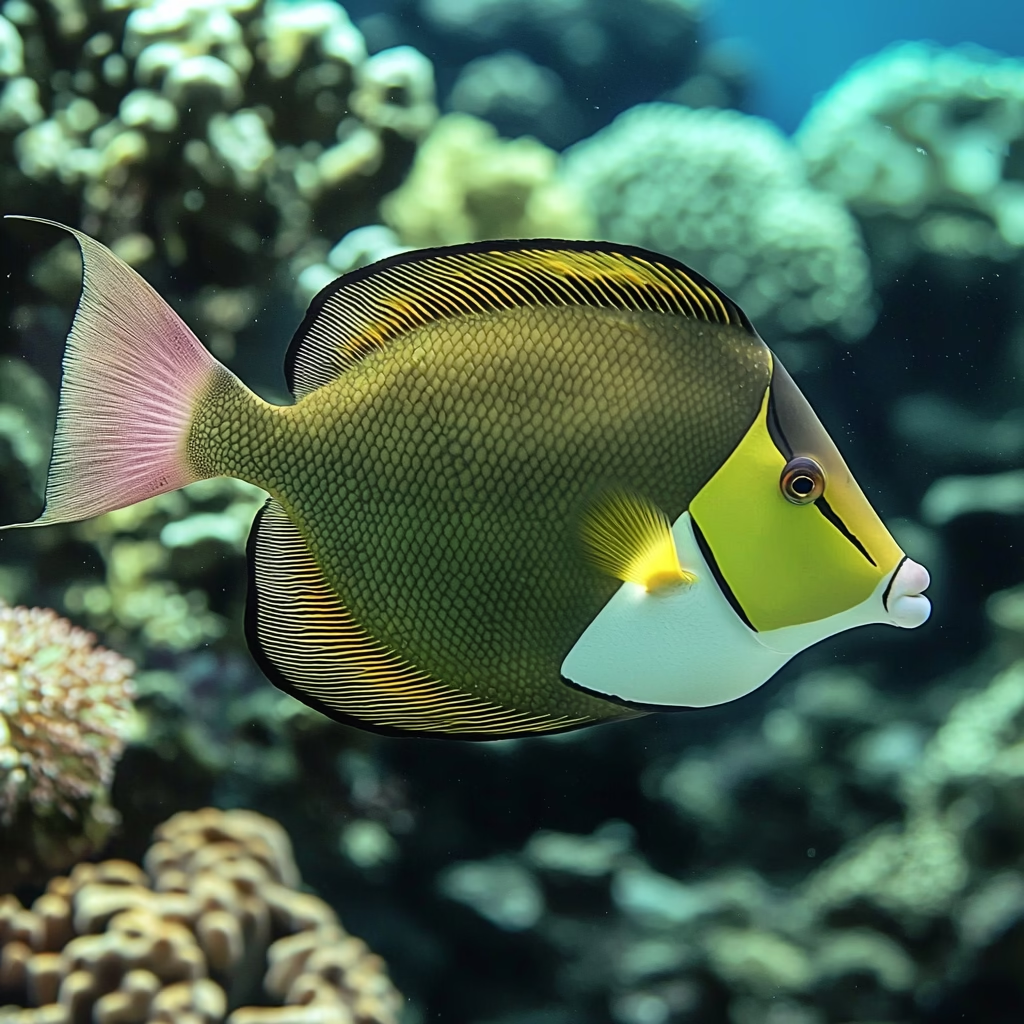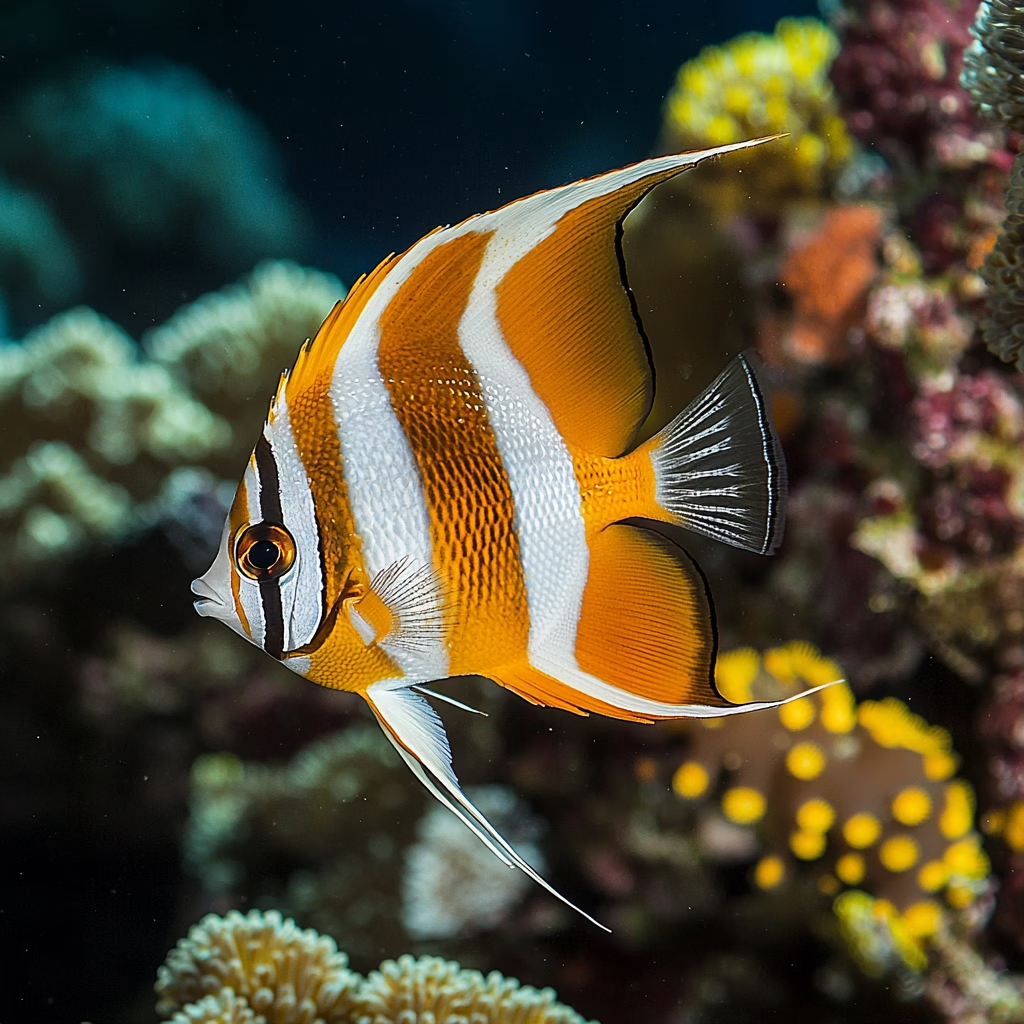The emperor angelfish (Pomacanthus imperator) stands as one of the ocean’s most striking creatures, commanding attention with its vibrant colors and regal presence. These magnificent fish have captivated marine enthusiasts, aquarists, and divers for generations, earning their imperial name through both beauty and behavior. From their fascinating lifecycle to their crucial role in reef ecosystems, emperor angelfish represent the perfect blend of elegance and ecological significance.
The Distinctive Appearance of Emperor Angelfish
Few marine creatures display the visual splendor of the emperor angelfish. Adults showcase a mesmerizing pattern of horizontal yellow and blue stripes across their bodies, complemented by a distinctive black mask around their eyes and a vibrant yellow tail. Their compressed, disc-shaped bodies typically grow to 15 inches (40 cm) in length, making them substantial residents of the reef.
What makes emperor angelfish particularly fascinating is their dramatic transformation from juvenile to adult form—a process known as metamorphosis. Juvenile emperor angelfish bear no resemblance to their mature counterparts, displaying a striking pattern of concentric blue and white circles on a deep blue-black background. This remarkable color shift occurs gradually as the fish matures, typically over a period of two to three years.
The purpose behind this dramatic transformation likely serves as protection during different life stages. Juveniles, with their “eye-spot” patterns, may confuse predators about their size and direction, while the bold striping of adults advertises their presence and potentially toxic flesh to would-be threats.
Habitat and Distribution
Emperor angelfish thrive throughout the Indo-Pacific region, establishing their domain from the Red Sea and East Africa to Japan, Australia, and the islands of French Polynesia. These adaptable fish make their homes in various marine environments but show a particular preference for reef slopes, channels, and lagoons with rich coral growth.
Within these habitats, emperor angelfish establish territories at depths ranging from 3 to 100 meters (10 to 330 feet). Adult specimens typically claim larger territories along outer reef slopes, while juveniles seek protection in shallower lagoons and reef flats, often hiding among branching corals or rocky overhangs.
This widespread distribution has helped maintain stable populations of emperor angelfish throughout much of their range, though localized pressures from collection for aquarium trade and habitat degradation pose growing concerns in some areas.
Behavior and Social Structure
Emperor angelfish live up to their royal title through territorial behavior that establishes their dominance over specific reef sections. Males vigorously defend territories that may span several hundred square feet, particularly during breeding seasons when competition intensifies.
These fish typically lead solitary lives or form mated pairs that patrol their territories together. Their daily routine follows a predictable pattern—emerging from protected sleeping spots at dawn to begin foraging, retreating during midday heat, and resuming activity in the afternoon before finding shelter for the night.
Communication among emperor angelfish involves both visual displays and subtle body movements. During territorial disputes, they engage in impressive posturing—raising fins, changing color intensity, and swimming in specialized patterns to assert dominance without physical confrontation.
Diet and Feeding Habits
As omnivorous reef dwellers, emperor angelfish maintain a diverse diet that contributes significantly to their habitat’s health. Their menu includes sponges, tunicates, algae, small invertebrates, and occasionally coral polyps. This varied diet allows them to adapt to different reef conditions and available food sources.
Emperor angelfish feed throughout the day, using their small but powerful mouths to scrape organisms from reef surfaces. Their specialized digestive systems efficiently process sponges—organisms many other fish avoid due to toxic compounds and glass-like spicules.
This feeding behavior serves a crucial ecological function by preventing any single organism from dominating reef surfaces. By consuming algae and sponges that might otherwise overrun coral, emperor angelfish act as living maintenance crews for healthy reef ecosystems.
Reproduction and Life Cycle
The reproductive journey of emperor angelfish begins with elaborate courtship rituals. Males perform complex swimming displays, changing color intensity and extending fins to attract females. Once paired, these fish often form long-term bonds, sometimes remaining together for several breeding seasons.
Spawning typically occurs near dusk during specific lunar phases, when pairs rise toward the water’s surface to release gametes. A single female can release thousands of transparent, buoyant eggs that float with ocean currents. After external fertilization, the eggs hatch within 24 hours into tiny larvae that drift in the planktonic stage for 2-4 weeks.
This planktonic phase serves as both a dispersal mechanism and growth period before the larvae metamorphose into their juvenile form and settle on reefs. The distinctive juvenile coloration emerges at this stage, beginning their remarkable multi-year transformation journey toward adulthood.
Emperor Angelfish in Aquariums
The breathtaking appearance of emperor angelfish has made them prized specimens in the marine aquarium trade, though their care presents significant challenges. Successful maintenance requires spacious tanks—minimum 180 gallons for adults—with established live rock, excellent filtration, and stable water parameters.
Recreating their natural diet poses another challenge, requiring a varied menu including marine-based foods, quality prepared foods, and occasional fresh vegetables. Their sensitive nature demands pristine water conditions, making them suitable only for experienced aquarists with well-established systems.
Ethical considerations surround the collection of emperor angelfish for aquariums. Responsible aquarists seek specimens that have been sustainably collected or, ideally, captive-bred, though successful breeding in captivity remains relatively rare for this species.
Conservation Status and Threats
While the IUCN currently lists emperor angelfish as a species of “Least Concern,” localized pressures warrant attention. Collection for the aquarium trade impacts some populations, particularly in areas with intense fishing activity. Habitat degradation from coral bleaching, pollution, and destructive fishing practices poses a more widespread threat.
Climate change represents perhaps the greatest long-term concern for emperor angelfish and the reefs they inhabit. Rising ocean temperatures and acidification damage coral ecosystems that provide both food and shelter for these magnificent fish.
Conservation efforts focus on establishing marine protected areas, implementing sustainable collection practices, and reducing reef-damaging activities. Research continues into captive breeding programs that could reduce pressure on wild populations while meeting aquarium trade demand.
Cultural Significance
The striking beauty of emperor angelfish has earned them cultural significance across multiple societies. In traditional Polynesian cultures, these fish feature in legends and artwork, often symbolizing strength and protection. Their distinctive patterns inspire contemporary artists, appearing in marine-themed paintings, sculptures, and photography.
For diving communities, spotting an emperor angelfish often represents a highlight of any reef exploration. Their bold colors stand out against coral backgrounds, making them favorite subjects for underwater photographers seeking to capture reef biodiversity.
The scientific name itself—Pomacanthus imperator—reflects human admiration, with “imperator” directly translating to “emperor” in Latin, acknowledging the regal bearing these fish display in their natural habitat.
Experience Emperor Angelfish in Their Natural Habitat
For those fortunate enough to don mask and snorkel in tropical waters, encountering emperor angelfish offers an unforgettable experience. Prime viewing locations include the protected reefs of the Maldives, the marine reserves of Palau, the Great Barrier Reef in Australia, and the diverse coral gardens of Indonesia’s Raja Ampat.
The best viewing typically occurs during morning hours when these fish actively forage, or during afternoon periods when territorial displays reach peak intensity. Patient observers might witness feeding behaviors, territorial disputes, or even courtship rituals that showcase the full behavioral repertoire of these magnificent creatures.
Conclusion
Emperor angelfish truly earn their imperial title, combining stunning visual presence with ecological importance across Indo-Pacific reef systems. Their remarkable life transformation from cryptically colored juveniles to boldly striped adults represents one of nature’s most dramatic metamorphoses.
As we continue to explore and understand marine ecosystems, emperor angelfish serve as both beautiful ambassadors for reef diversity and indicators of ecosystem health. Whether admired through diving masks or studied by marine biologists, these magnificent fish continue to reveal the complex interconnections that sustain healthy oceans.
For reef conservation efforts, highlighting charismatic species like the emperor angelfish helps build public support for broader marine protection initiatives. By appreciating these majestic creatures and the habitats they depend upon, we take an important step toward ensuring vibrant reefs for generations to come.

